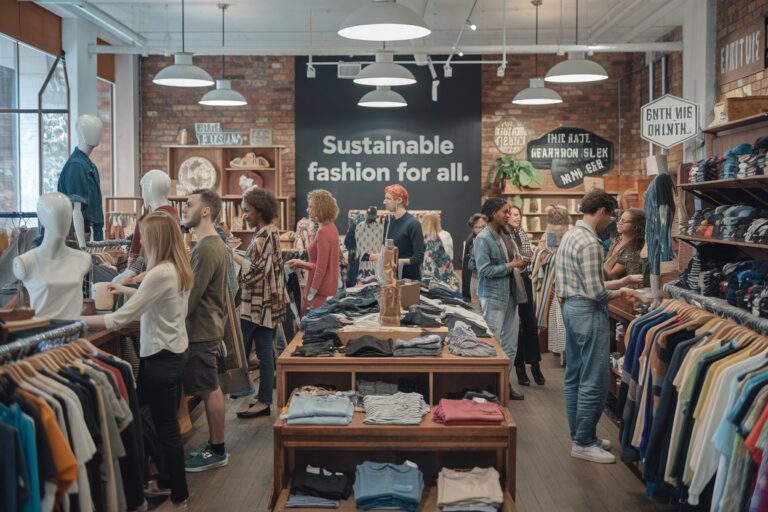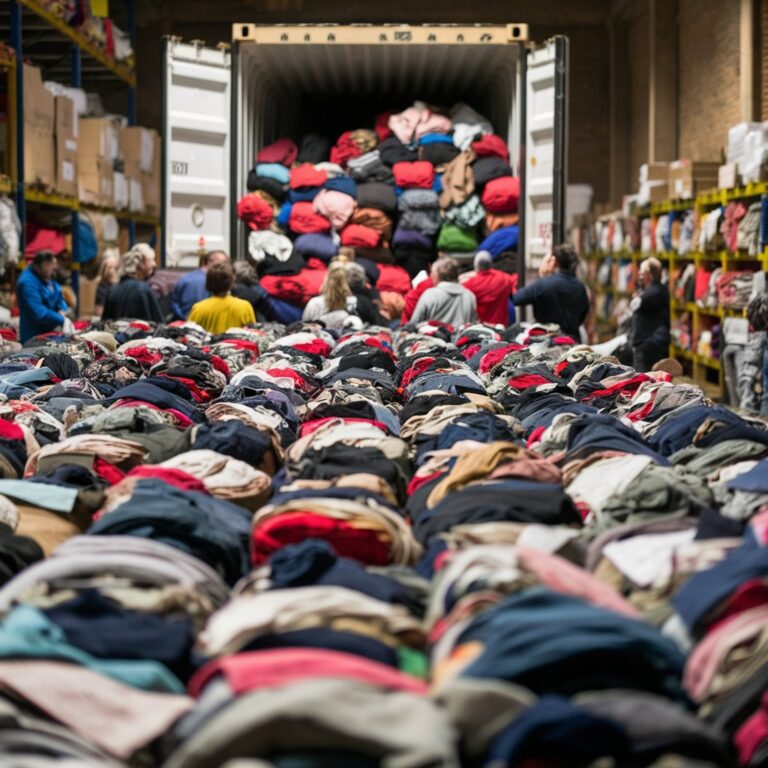Secondhand Clothes Becoming More Popular in 2025
The fashion industry is undergoing a transformative shift as secondhand clothing becomes more mainstream. With consumers increasingly seeking sustainable options, the secondhand market is on the rise. What was once viewed as a niche market is now attracting people from all walks of life, from eco-conscious consumers to budget-savvy shoppers.
Reasons Behind the Popularity of Secondhand Clothing
Increased Environmental Awareness
Environmental sustainability has become a primary driver in the popularity of secondhand clothing. As awareness grows around the environmental impact of fast fashion, more consumers are turning to secondhand clothes to minimize waste and reduce their carbon footprint.
Reducing Textile Waste
Textile waste has become a major issue worldwide. Every year, millions of tons of clothing end up in landfills, with synthetic materials taking hundreds of years to decompose. By opting for secondhand clothes, consumers contribute to reducing this waste, promoting a more circular and sustainable economy.
Minimizing the Carbon Footprint
The production of new clothing involves significant carbon emissions, from the farming of raw materials to the manufacturing processes. Buying pre-owned garments helps decrease demand for new items, thereby reducing the overall carbon footprint of the fashion industry.
Economic Advantages of Buying Preloved Fashion
Beyond the environmental benefits, secondhand clothing offers considerable economic advantages to consumers. Shoppers can find high-quality pieces at a fraction of the original price, making sustainable fashion accessible to more people.
Affordable, High-Quality Options
Secondhand stores often carry high-quality, durable garments that have been gently used, allowing consumers to enjoy premium fashion at affordable prices. This affordability makes secondhand shopping appealing to a broader audience.
Luxury and Designer Items at Reduced Prices
For fashion enthusiasts who covet designer brands but are constrained by budget, the secondhand market offers access to luxury items at reduced costs. This democratization of luxury fashion is one reason for the steady increase in demand for preloved clothes.
Unique Styles and Vintage Appeal
The unique style options available in secondhand stores are another factor driving this trend. Unlike fast fashion, which often follows seasonal trends, secondhand clothing offers a mix of vintage and retro styles that allow individuals to express their personal fashion sense.
Standing Out from Mass-Produced Fashion
Secondhand clothing enables shoppers to curate their wardrobe with unique pieces, setting them apart from mass-produced fast fashion. This ability to stand out is particularly attractive to younger consumers who prioritize originality.
The Charm of Vintage and Retro Clothing
Vintage fashion has an enduring appeal that resonates with many consumers. Items from past decades have a timeless quality, making them sought-after treasures that bring a sense of nostalgia and history to modern wardrobes.
The Impact of the Sharing Economy and Circular Fashion
As the sharing economy gains momentum, the concept of circular fashion—where clothing is reused, shared, or recycled—is also becoming more prevalent. Secondhand shopping is a key component of circular fashion, as it keeps clothing in circulation longer and reduces the need for new resources.
Who Buys Secondhand Clothing? Demographics & Consumer Behavior
Millennials and Gen Z Driving the Trend
Millennials and Gen Z are at the forefront of the secondhand clothing movement, driven by values of sustainability, affordability, and individuality. These younger consumers are more inclined to view secondhand clothing as a viable, fashionable choice rather than as a compromise.
How Social Media and Influencers Shape Secondhand Fashion
Social media platforms have played a pivotal role in popularizing secondhand fashion. Influencers and celebrities often showcase their thrifted finds, making secondhand fashion aspirational. Platforms like Instagram and TikTok have transformed thrift shopping from a niche activity into a mainstream trend.
How E-Commerce Platforms are Revolutionizing Secondhand Shopping
Popular Platforms for Buying and Selling Secondhand Fashion
With the rise of digital platforms, buying and selling secondhand fashion has become easier and more convenient. Websites like ThredUp, Poshmark, and Depop offer a vast selection of items, allowing users to shop for preloved clothes from the comfort of their homes.
Case Study: Success Stories of Online Thrift Stores
Online thrift stores have flourished in recent years, as demonstrated by the success of companies like ThredUp and Poshmark. These platforms have built communities of dedicated secondhand shoppers and have expanded the reach of preloved fashion beyond local thrift stores.
Key Benefits of Secondhand Fashion: An Overview
| Benefit | Description |
|---|---|
| Environmental Benefits | Reduces textile waste, carbon footprint, and demand for new resources |
| Economic Benefits | Provides affordable access to high-quality and designer items |
| Unique Styles | Allows for individuality with vintage and retro pieces |
| Support for Circular Fashion | Extends the lifecycle of clothing, promoting sustainability |
| Access to Luxury | Offers budget-friendly access to luxury and designer brands |
Case Studies: How Brands Are Embracing Secondhand Markets
Several well-known brands, including Patagonia and Levi’s, have embraced the secondhand market by introducing buy-back and resale programs. These programs allow customers to return used items for resale, supporting a circular economy and reinforcing the brand’s commitment to sustainability.
Tips for Finding Quality Pieces in Secondhand Stores
Navigating secondhand stores can be overwhelming for first-timers. Here are some tips to help shoppers find quality pieces:
- Check for Condition: Look for items without tears, stains, or excessive wear.
- Examine Fabric Quality: Natural fabrics like cotton, wool, and silk tend to last longer than synthetics.
- **Look for items with durable stitching**: Strong, reinforced stitching is a sign of quality, so check seams and hems to ensure durability.
- Know Your Sizing: Sizing standards have changed over the years, so try items on when possible, or use a measuring tape to ensure a good fit.
- Be Open to Alterations: If you find something that’s almost perfect, consider minor alterations to make it fit perfectly. This can often turn a good find into a great one.
| Challenges | Description | Solutions |
|---|---|---|
| Sizing Issues and Limited Availability | Secondhand items are often unique, making it challenging to find specific sizes or styles. This can be frustrating when shoppers find a piece they love but can’t locate it in their size. | Shoppers can explore alterations to tailor items to fit. Additionally, many online platforms offer search filters by size, helping users find options that meet their needs more easily. |
| Stigma Surrounding Pre-Owned Fashion | Some people still view secondhand clothing negatively, associating it with concerns about cleanliness or quality despite its growing popularity. | The perception of secondhand fashion has improved with high-quality curation and better cleaning standards. Retailers can counter this stigma by emphasizing their quality checks, thorough cleaning processes, and promoting the sustainability of secondhand fashion. |
Conclusion: The Future of Secondhand Fashion
The secondhand fashion market shows no signs of slowing down. As more consumers recognize the environmental, economic, and unique style benefits of preloved fashion, the market is expected to continue expanding. This shift has encouraged brands, influencers, and even traditional retailers to embrace secondhand options, creating a robust and dynamic market for consumers who value sustainability.
Secondhand fashion isn’t just a trend—it’s a reflection of a growing cultural movement that prioritizes sustainable and ethical consumption. By participating in this movement, consumers contribute to a future where fashion and sustainability go hand in hand, transforming the industry for the better.








